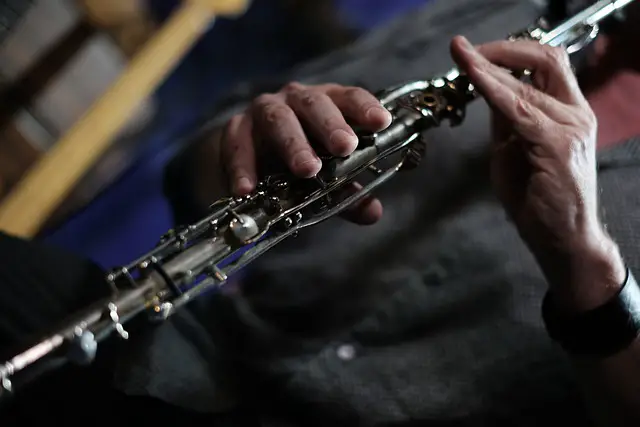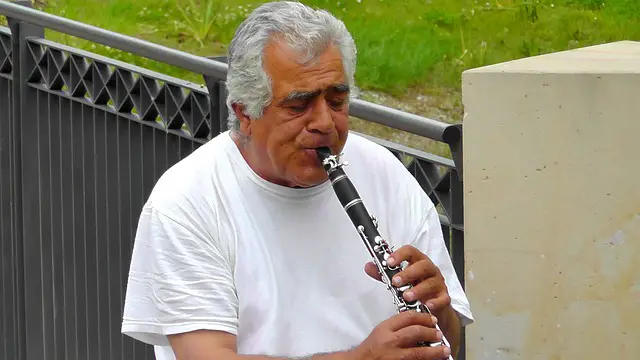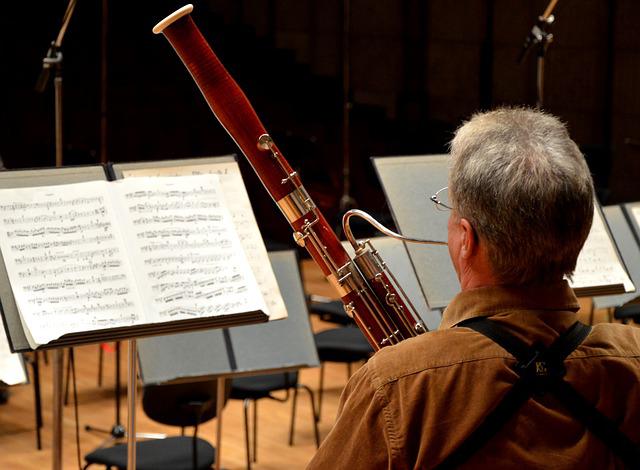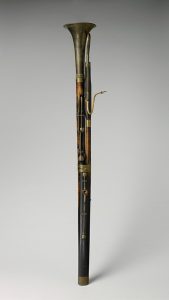What instruments are similar to saxophone?
Are there instruments similar to the saxophone? Yes, there are. Some musical instruments are quite similar to the saxophone either through their sound production techniques, their positioning, or their structure in general.
Before now, you must have known that the saxophones are conical-shaped woodwind instruments that include a single reed. All single-reed instruments generate sound in the same way: by having a reed vibrate on a mouthpiece and send sound waves through the instrument’s body.
Majority of the woodwind instruments produce sounds using this special technique. In this article we would outline the instruments that are similar to the saxophone.
Instruments are similar to the saxophone?
Most woodwind instruments are similar to the saxophone in a number of ways, these include instruments like; the clarinet, flute, oboe, the bassoon and the Contrabassoon.
1. Clarinet

The clarinet is the most similar instrument to the saxophone. The family of the clarinets are all connected to one another.
All of these instruments belong to the clarinet family which extends from the Eb clarinet to the Bb contrabass clarinet.
Clarinetists can more easily switch between instruments because they all have the same fingerings. Since not every clarinet is tuned to the same key, clarinetists need to be familiar with transposing across keys.
Similar to the saxophone, there is only one reed in a clarinet. There are five components to a clarinet: the mouthpiece, barrel, top and bottom joints, and bell. Each component is attached with a twisting motion that requires precision. Assembly of the clarinet is facilitated by cork pads attached to the ends of the individual pieces.
Again, the mouthpiece of a clarinet is comparable to that of a saxophone. The two mouthpieces can be fashioned from a variety of materials, including hard rubber, glass, or plastic. The sound is formed and vibrations are transmitted through the instrument via both mouthpieces.
The clarinet’s barrel serves a purpose analogous to that of the saxophone’s neck. The barrel is the part of the instrument that links the mouthpiece to the rest of it. The clarinet’s barrel also aids in tuning. Avoid adjusting the intonation by adjusting the saxophone’s neck.
Similar to saxophones, clarinets have keys and tone holes located at both the upper and lower joints. Unlike the clarinet, which has a body constructed of two halves, the saxophone’s body is formed of a single piece of material.
The clarinet’s bell resembles that of the saxophone. The sound is amplified and emitted from both bells. Both the clarinet and the saxophone have bells, but the saxophone’s bell is permanently affixed to the instrument’s body.
2. Flute

Like the saxophone, the flute belongs to the family of woodwind instruments. Woodwind instruments are characterized by a body made of wood or metal that generates music by the vibration of reed in the mouthpiece or by blowing air into its mouthpiece that is controlled by keys or can be adjusted to produce different pitches.
Wood, copper-nickel, silver, and even gold can be used to make flutes, just to name a few of the many possible materials.
These are analogous to the materials utilized in the production of the brass saxophone. Copper, zinc, nickel, and tin are just a few of the metals that go into making brass.
It follows that the flute and the saxophone can both benefit from the use of a wide variety of materials, each of which generates a unique tone when properly fitted.
The reed of a saxophone vibrates in response to air pressure created by the player’s lips on the mouthpiece. A saxophone’s sound is created when the musician blows into it at a steady rate and at a pressure higher than normal air pressure.
All the energy comes from the player’s breath, which flows constantly and causes the air to vibrate. The reed, which is located in the mouthpiece, is responsible for the vibrations. Resonance in the saxophone is also responsible for its vibrating action.
Similarly, the sound of the flute is created by the flutist blowing forcefully through the mouth hole, with the air stream making contact with the edge being cyclically driven outward and inward. This oscillating air stream induces cyclic oscillations of the air column within the cylindrical tube, creating sound.
Woodwind pitch relies on the volume of air that is vibrating. A lower pitch results from a slower vibrational rate, while a higher pitch results from a faster vibrational rate.
Woodwind instruments often have a series of holes along its length that the player can open and close to alter the instrument’s pitch. If additional holes are plugged, the instrument becomes longer and the notes become lower. Despite having different systems, the same idea holds for both the flute and the saxophone.
3. Oboe

Having played both the saxophone and the oboe to some degree, I can attest to the fact that they share certain similarities, albeit not very striking ones.
No one would argue that the two instruments are similar. Both are wind instruments, but the one is a single reed while the second is a double reed; one is made of metal while the other is built of wood; the first is rarely heard in an orchestra while the second is rarely heard in jazz, etc.
The fact that they are both woodwind instruments is the most striking commonalities. And while that may seem like a snarky response, it’s actually what makes that similarity so crucial. For one thing, their fingerings are remarkably similar because of how similar their ranges are.
While the two instruments use distinct reed configurations, they are otherwise comparable in terms of embouchure and intonation adjustment. Since soprano saxophone and oboe tuning are so similar, this was helpful to me when I first started playing the instrument.
4. Bassoon

In terms of difficulty, switching from saxophone to bassoon might be the least demanding. This is due to the fact that the saxophone and bassoon reeds both have a similar angle of entry. Air pressure is likewise similar for the bassoon and saxophone.
Embouchures for the saxophone and bassoon both use an “o” form. Bassoonists, on the other hand, employ a double-lip embouchure.
One must take care when playing the saxophone that their teeth do not come into contact with the reed. There are numerous parallels in the fingerings as well; nevertheless, you will need to make some minor adjustments to your hand position.
5. Contrabassoon
One of the largest members of the woodwind family is the contrabassoon. Like the bassoon, it has a reed at its center and is played by blowing air through it to create sound. On the other hand, it’s much windier and longer than a bassoon.
Double reed instruments are distinct from other wind instruments because their reeds are made of two separate pieces of cane that vibrate against one another when air is blown through them. Yes, as the name implies, a single reed instrument only requires a single cane to create sound.
In addition to sharing the same family of woodwind instruments and the same reeds, the contrabassoon and the saxophone are also very similar in terms of how they are played.
Both the contrabassoon and the saxophone necessitate a seated playing position, the former due to the weight of the instrument and the latter to maximize sound production and facilitate proper breathing techniques.








